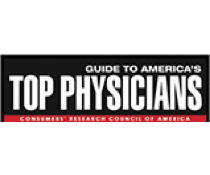Have you ever heard someone complaining of pain from a “slipped disc?” If so, they are referring to a herniated disc. Discs can bulge when they lose water content, making the disc flatter with less cushioning. When a disc becomes too weak and begins to bulge, it puts pressure on the surrounding nerves. This pressure can cause nerve pain, numbness, tingling and weakness.
Herniated discs can occur in the cervical spine (neck) or in the lumbar spine (lower back). Today, I will share my experience with patients who have a herniated disc in the cervical spine. This condition can occur without any obvious cause or injury. Some of the risk factors include: trauma, an accident or sudden twisting, a repeated or sudden strain on the back (as from lifting a heavy weight) or certain jobs that require heavy lifting. Some people are at a higher risk for this condition, but how do you know when you have actually hurt yourself?
Symptoms of a herniated disc in the cervical spine include:
- Sudden neck or shoulder pain that travels down your arms
- Numbness, tingling, or weakness in one or both arms
- In some cases, weakness in legs, loss of balance, partial or complete paralysis
- Difficulty with fine movements of the hands, such as typing, buttoning a shirt, picking change out of your pocket, writing
- Loss of balance
Depending on the symptoms of the patient and the severity of the herniated disc, there are a few different treatment options that I would recommend. In many cases, a herniated disc in the cervical spine can be treated without surgery. Non-surgical options include: medications (such as anti-inflammatories, muscle relaxers or painkillers), wearing a neck brace, physical therapy/chiropractic, and injections.
If the prescribed medication and therapy is not alleviating the patient’s pain, another treatment option is to administer steroid injections into the area around the nerve and herniated disc, called an “epidural steroid injection.” This is a powerful pain reliever. If there is no improvement after a patient receives steroid injections, the final option is to have surgery.
For the surgical treatment of a herniated disc in the neck, I commonly recommend an anterior cervical discectomy and fusion surgery, known as “ACDF.” This is a highly successful surgery for pain relief, with a very quick recovery. Sometimes a smaller surgery, called microdiscectomy (removal of fragments of herniated disc through a small incision) can be performed, which does not require fusing any of the bones together. Finally, disc replacement technology is available, and appropriate in a select few cases.
Next week, I will be blogging about herniated discs of the lumbar spine (low back) as a follow-up to today’s topic. For more information about herniated discs, please visit my website “Conditions” page at: https://mccancemd.com/conditions/herniated-disc/.









